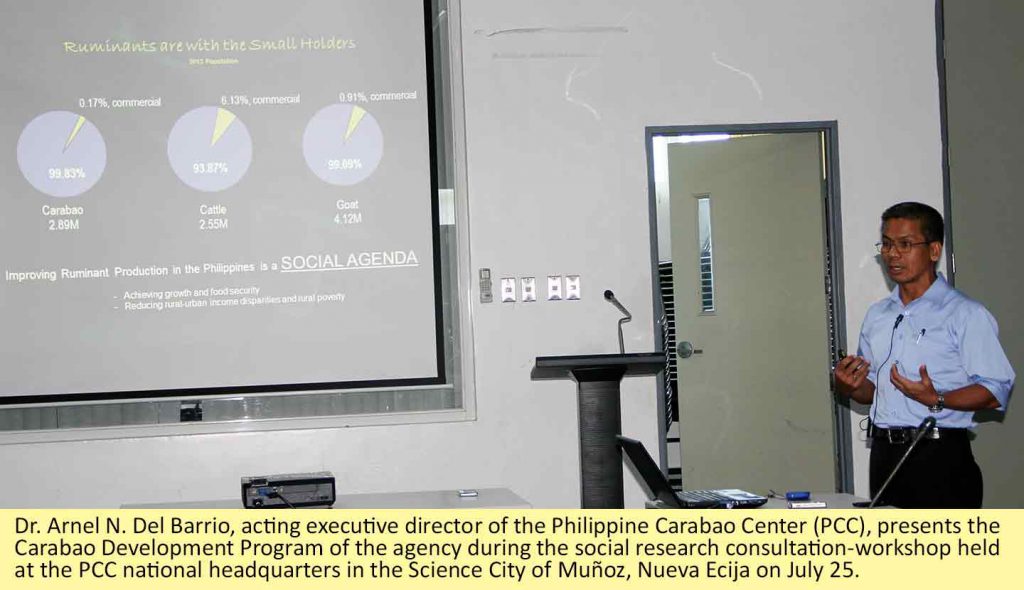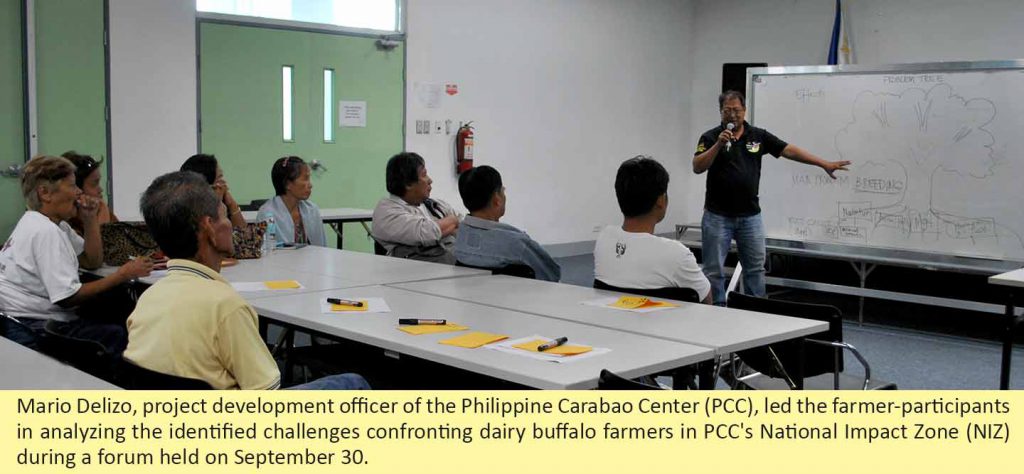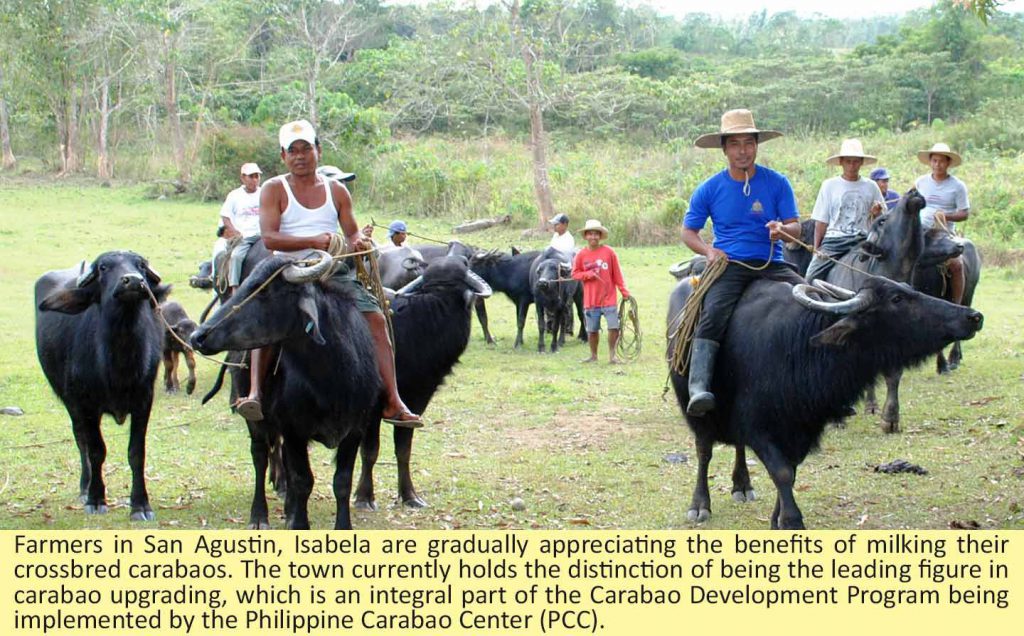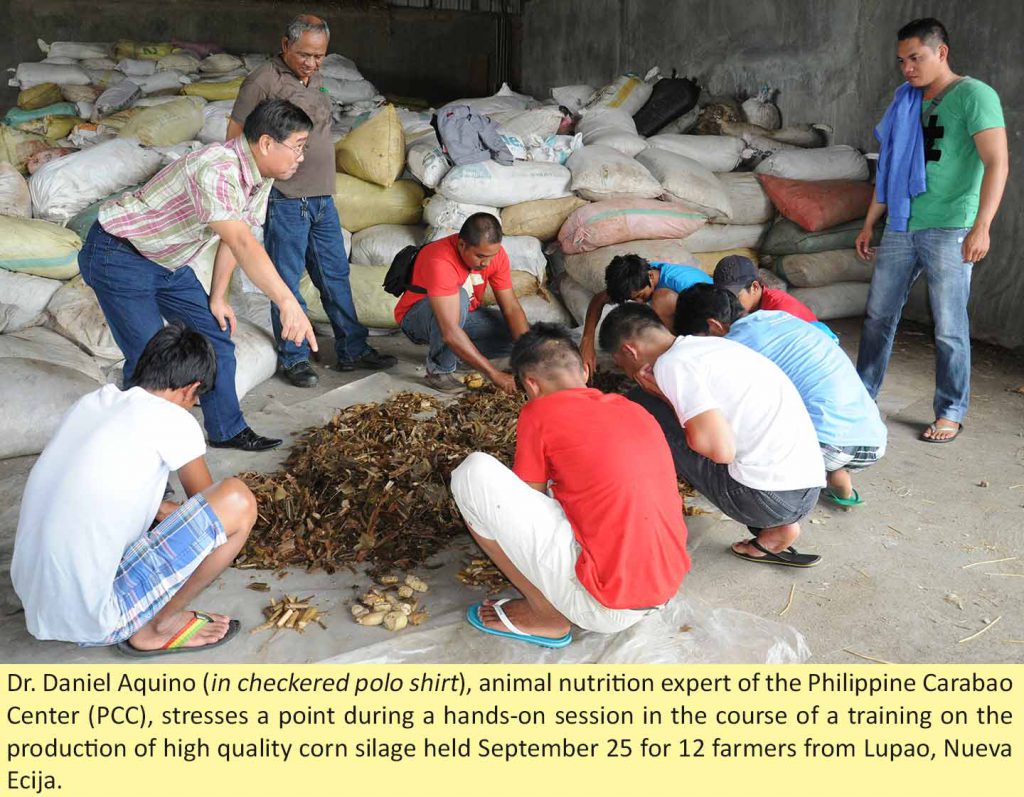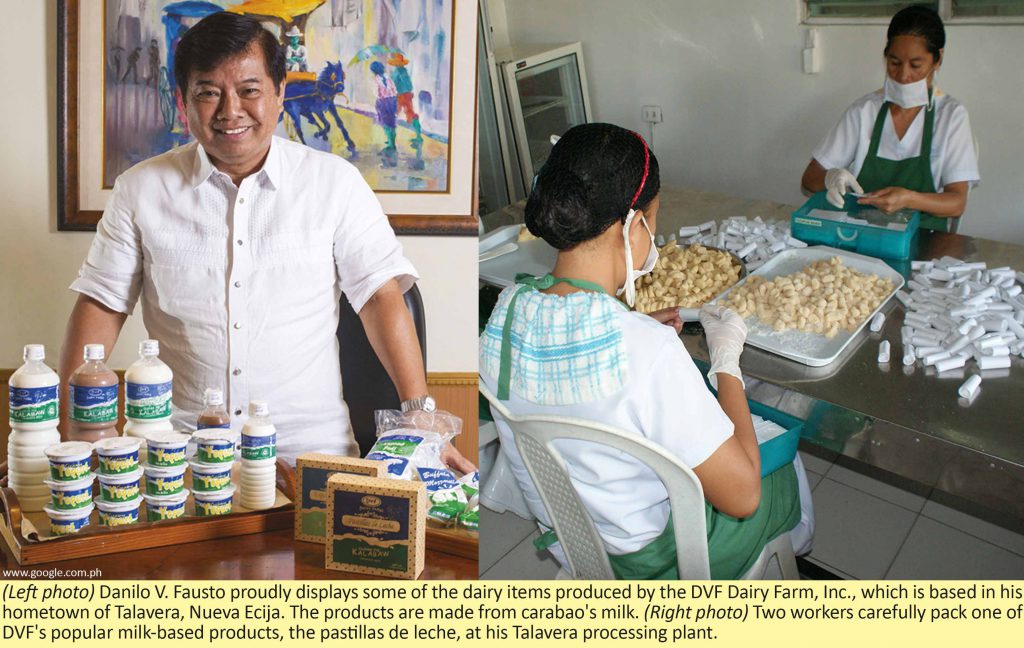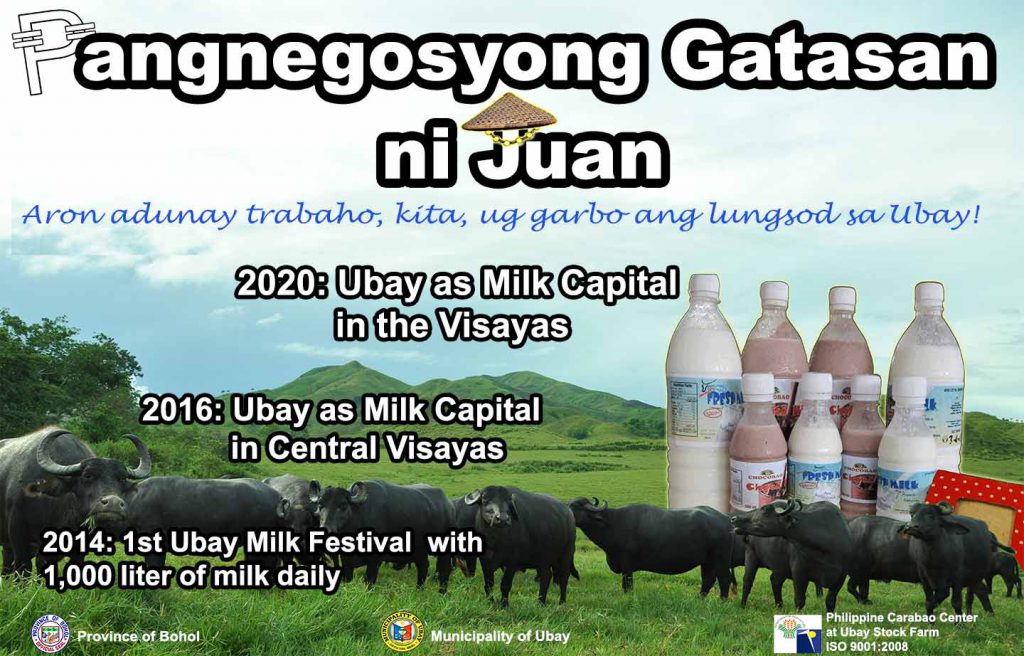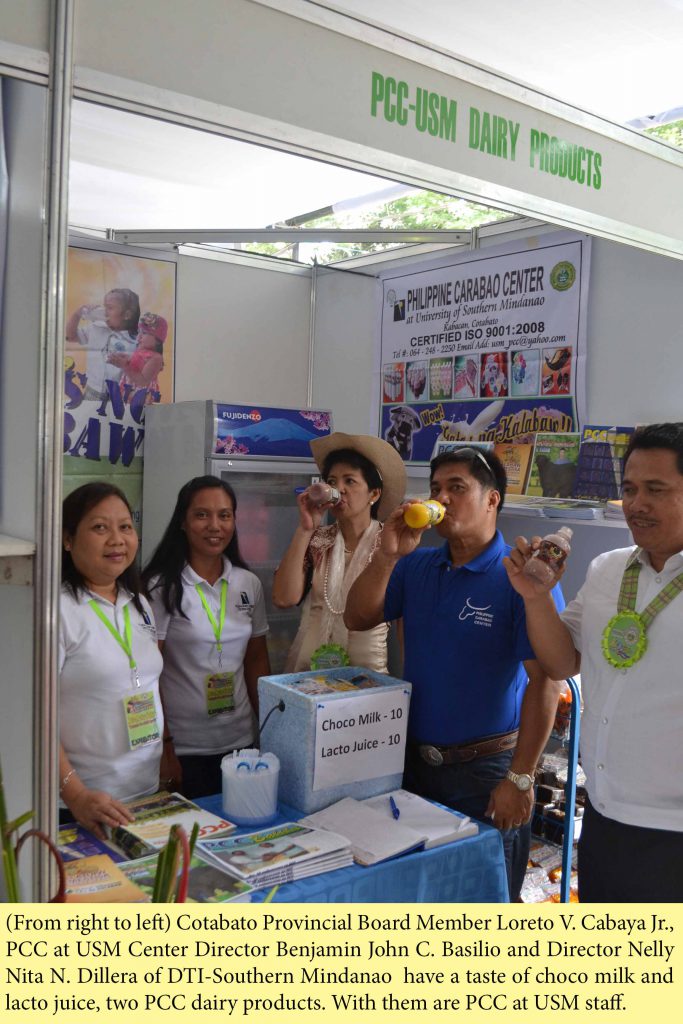Every place has its own marks or attributes which may catapult it to prominence. And such distinguishing features can become channels or pathways for progress and development.
Take the case of San Agustin in Isabela province. Its success in upgrading the carabao or the native swamp buffalo has earned for the municipality the distinction of being the frontrunner in the National Carabao Development Program being implemented by the Philippine Carabao Center (PCC).
Undeniably, the importance of the carabao, especially in the lives of farmers, including those in San Agustin, has become broader. This is mainly due to the fact that the carabao is their number one trusted ally in their farming activities that include, among others, land cultivation and hauling of harvested crops. No wonder that among the farmers, there is an accepted aphorism that says they are only half-farmers if they don’t own a carabao.
Moreover, the female carabaos now have added meaning for farmers: production of fresh milk that translates to much-needed daily cash. This is especially true for the dairy-type carabaos, like the Murrah buffaloes, Italian buffaloes, Brazilian buffaloes and the crossbreds, which provide milk yield substantially higher than that of the native buffaloes.
Crossbreeding introduced
Crossbreeding of the native-type to that of the milk-type of carabaos was introduced in the context of the Philippine Carabao Act of 1992. The result of this is the crossbred which, at its first generation, carries the 50% exotic blood and 50% Philippine carabao breed blood up until it reaches almost the purebred state after four generations of backcrossing.
According to studies, crossbred carabaos have the potentials for higher growth rate and milk production. It can produce an average of 4.14 liters of milk a day or better as their upgrading continues.
San Agustin town is a fourth-class municipality with 23 barangays (villages). It is situated at the crossroads of the provinces of Isabela, Quirino and Aurora that kisses the foot of the vast Sierra Madre Mountain range. The town’s topography consists mostly of rolling hills with a total land area of 16,973.23 hectares. These are mainly used for corn, cassava and banana production. Only a few patches are planted to rice.
The town has a big number of native carabaos which the farmers use in their farm works. Its mountainous terrain, which is rich in grasses, assures the farmers of abundance of needed forage. Its prevailing peace and order situation likewise guarantees that the animals can be left grazing the whole day in the open field and retrieved only the next morning for bathing.
In 1992, San Agustin was one of the areas identified, through a Memorandum of Agreement (MOA) between the then Philippine Carabao Research and Development Center (PCRDC) at Cagayan State University (now Philippine Carabao Center at CSU) and the Department of Science and Technology (DOST) in Region II (Cagayan Valley) for the conduct of the Carabao Crossbreeding Program.
Later, in 1995, Mayor Virgilio Padilla declared the Carabao Upgrading Program (CUP) in San Agustin as the town’s banner program. The farmers of the town, at first, hesitantly embraced the program to improve the breed of their carabaos.
However, Mayor Padilla, aware of the difficulty in making his constituents adopt the program, was undeterred. He was convinced the program would benefit his farmer-constituents and exerted all efforts to get them to actively participate in the undertaking.
His persistence paid off. At the helm of the program for ten years now, the CUP continues to gain strength. In fact, a believer of leadership by example, the mayor himself is engaged in raising crossbreds.
The town’s success in carabao upgrading is attested by its relatively large number of crossbreds. As of last count, San Agustin’s crossbred population now stands at 5,736 head. The challenge facing it now is how to maximize this big resource for providing more income for the farmers and improve their nutritional level as well as that of their families.
Changing mindsets
At present, only a limited volume of milk is currently collected daily from the crossbreds. Majority of the town’s farmers use their crossbreds for farming works and other related activities because of its draft ability.
“Our farmers here benefit a lot from their crossbreds in farm works because these are really good as source of draft power, especially in plowing the land. They are also good in “karyada”, which is the hauling of harvested banana, rice and corn. Their strides are longer than that of the native carabaos. As long as you provide them with the proper management, the crossbreds will surely perform well,” Mayor Padilla said.
His description of the regard of farmers for crossbreds jibed with the findings of a research study titled: “To Milk or Not to Milk: Understanding the Socio-Economic Characteristics and Behavioral Intentions of Crossbred Buffalo (CB) Owners in San Agustin, Isabela”. It was conducted by PCC researchers, namely, Dr. Eric Palacpac, Erwin Valiente, Rovina Jacang, Moses Gil Honorio, Honorato Baltazar, and Dr. Annabelle Sarabia. As of 2012, only half of the CB owners were milking their animals daily.
The study showed that the farmers raise the CBs primarily for draft, breeding and meat purposes. Utilizing the CBs for dairying is common only among those who have already experienced milking their CBs.
It was also found out that a good number of the farmer-owners of CBs are driven mainly by certain socio-economic factors on their decision “to milk” or “not to milk” their animals. They tend to milk only when the number of their CBs increases or when they set their mind in raising the animals for dairy purposes or when they are already adept in milking.
“Some farmers don’t want their calf to be interrupted from getting continuous nourishment from its mother in order for it to be strong enough. Their mind set is that the milk is only for the calf and the big carabao is for draft that’s why they also want the calf to be strong and big. This is the reason why dairying is only a secondary concern. We need to explain to them, that there is money out of the milk they get from the carabao,” Mayor Padilla said.
Empowering dairy enterprise
Mayor Padilla, in an effort to induce the full flowering of dairying in his town, appointed the retired Municipal Agriculture Officer (MAO), Julio Lamug, as a consultant, and gave orders to the acting MAO, Virginia Lamug (wife of the retired MAO), to convince, monitor and encourage the farmers and owners of carabaos to take the dairying program into serious consideration and make use of four milking barns put up using a Php5M assistance given by the provincial government of Isabela.
All three personalities have the “authority” to speak well of the beauty of the program as they themselves have their purebreds and crossbreds. The Lamugs have a total of 21 crossbreds while the mayor, 20 head. They have milking barns of their own. No doubt, they serve as models in carabao- raising and dairy enterprise development, a feat which they hope will serve as an inspiration for their farmer-townmates.
To conserve the number of crossbreds in the municipality, the local government unit (LGU) of San Agustin passed an ordinance regulating the sale and slaughter of crossbred buffaloes in November 2008.
“If given a chance, we will propagate crossbred carabaos here in the District 4 of Isabela. Our direction is still toward enterprise development, with the production of crossbreds as a continuing endeavor,” Mayor Padilla said.
In all his speaking engagements, he encourages people to go into dairyng. He always cites the benefits that carabao-owners can get out of their lactating dams.
Crossbreds at center stage
San Agustin town is also known for its assiduous celebration of its “Nuang Festival”. “Nuang” is an Ilocano term for carabao.
The annual event, which includes a competition featuring the carabaos, is a much-anticipated occasion for carabao-owners because their animals take center stage of the festival. It also recognizes their significant contribution in sustaining a program aimed at improving the carabao breed.
“Aside from the money they might get from winning in the contest, they also have an incentive of Php200 for every carabao that participates in the parade. So if you have five carabaos, you have a total incentive of Php1000 in an instant,” Virginia Lamug said.
The carabao entries vie for such titles as “Biggest Male”, “Biggest Dam”, “Most Beautiful Carabao”, “Best Milker”, among others.
Currently, the municipality has a total of 13 dairy associations and one dairy cooperative, which is the San Agustin Dairy Cooperative (SADACO).
Farmer-models in dairy enterprise
Amid the “psychological block” in the dairy aspect, there are farmer-models in San Agustin who are living examples of the advantages of dairying. They themselves proved how engaging in dairy enterprises helped them improve their lives.
Manrico Claro, SADACO head and chairman of the coop’s board, is one of the farmer-models in dairy enterprise development. Also the president of Santos Crossbred Carabao-Owners Dairy Association, he currently owns 14 carabaos, 11 of which are female and three are bulls. Among the 11 females, two are lactating and the rest are pregnant. He harvests an average of four liters of milk from his dams.
SADACO was registered as a cooperative in October 2012. Out of its 57 members, though, only a few are into the milking program. Claro himself continuously encourages his co-members to milk their lactating cows for them to savor all the benefits they can get from dairying.
“We can convince other members to milk their carabaos with the help of our former MAO and PCC consultant in the LGU. They will help me explain the program in dairying to the people and for sure, this barangay will progress when they engage in dairy enterprises,” Claro said.
The SADACO chairman attests to how dairying helps him and his family in meeting their daily expenses. He sends his children to school. He has constructed a structure needed for his vermicomposting venture to further increase his income. He uses carabao manure in the vermicomposting project and sells the product at Php250 per sack.
“I am really focused on dairying because of the income I derive from it,” he declared.
Five years from now, Claro envisions that their cooperative will have many dairy products’ outlets in the malls and other market places and that their members will grow in number. He also hopes that the members of all the dairy associations in their town will give their full support to the dairying program.
“To all carabao-owners, look at the advantages of dairying. In just 30 minutes you can finish milking your three lactating carabaos, and there is already money you can get per liter of milk harvested. If San Agustin as beccme the crossbred carabao capital of the Philippines, I hope that eventually it will also be proud for its achievement in dairying,” Claro said.
Another farmer-model is Loreto Barroga. The coop considers him as one of its consistent suppliers of milk. He provides the coop with six liters of milk daily. He has 12 crossbreds, five of which are dams, two are bulls and the rest are calves.
Barroga has two children. One has already earned a degree in Hotel and Restaurant Management (HRM) and the other is in college taking up the same course.
“Our crossbreds enabled us send to our children to school. If it wasn’t for our carabaos’ milk, my eldest could not have finished his studies,” he declared.
Barroga is also one of the dairy farmers in San Agustin who is very proud that after years of backcrossing, one of his crossbred carabaos is now almost purebred.
It is true that propagation of purebred dairy buffalo bloodline is not easy because it takes generations. It will need to have an average of four generations before it can reach a 97% purebred dairy carabao bloodline or about 20 years. But in San Agustin, many farmers are almost achieving that reality.
In Barangay Sinaoangan Sur, a place which topped the Green Revolution contest in the ‘70s, and where the most number of crossbreds are found, lives a dairy farmer who is considered as the top-seller of carabao milk. Arnel Cosilit owns 25 crossbreds, one of which is a bull. He harvests an average of 12 liters of milk daily from his five lactating dams.
Mayor Padilla, in his strong drive for carabao upgrading to continue gaining more ground in his town, sent several of his constituents to train with PCC at CSU as Village-Based Artificial Insemination Technicians (VBAITs). As such, they serve their respective barangays where they live.
Further, the PCC-trained VBAITS, along with technicians from the Department of Agriculture (DA), conduct massive AI activities at least once a month in the different barangays to ensure the sustainability of the Carabao Upgrading Program. Needed supplies, including those for vaccination and deworming, are provided by the LGU.
With the collaborative efforts of the LGU, PCC as well as other partners and supporters, the town of San Agustin hopes to be more invigorated in moving forward to achieve greater results, not only in carabao upgrading but also in dairy enterprise development.
“Here in San Agustin, as long as you have carabaos, especially crossbreds, the joy of being a carabao owner will carry you on,” Mayor Padilla proudly declares.

